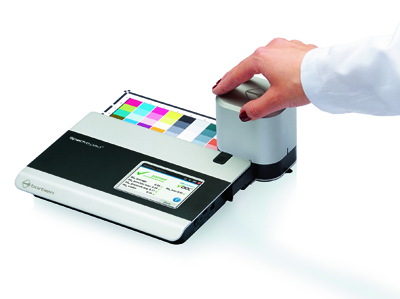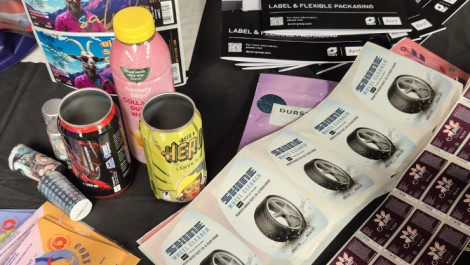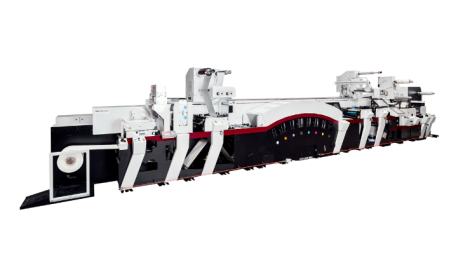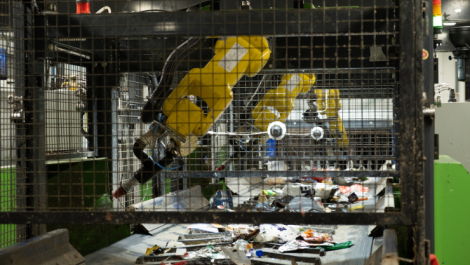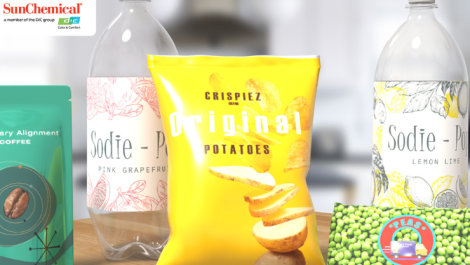Barbieri SpectroPad
Colour reproduction represents both the greatest challenge and the greatest opportunity for digital printing in packaging and labels. Given the importance of ‘house colours’ to brand owners, a lot of the issues of colour separation and management for digital print concern accurate reproduction of those colours. By Simon Eccles.
Digital printers, as a class, struggle with special colours that are changed between jobs. Instead, the special colour issue is nearly always addressed with standardised ‘extended colour gamut’ (ECG) sets of process inks that hit a wider colour range than traditional processes’ CMY and so don’t need specials. ECG sets may either be purer implementations of CMY than litho and flexo inks, or they may be additional transparent process colours, typically orange, green, violet or blue.
The issue is to convert brand colours into separations for all-process digital presses. Brands typically define their colours as Pantone values, though the more technical will give an L*a*b value, sometimes inside the newish CxF format.
Any digital front end supplier will almost certainly have a Pantone licence to convert CMS values to the appropriate process ink combination. Colour servers do the same but offer more device independence. GMG is a big name in colour proofing, and it also offers ColorServer for production printers. This works fine for CMYK but so far can’t handle more than four process colours. GMG does however offer a Photoshop plug-in that can pre-separate images in up to seven colours.
CGS’ ORIS PressMatcher //Web is also designed for matching different printers or processes. It calibrates devices to common standards such as Fogra 39, with fine-tuning for individual colours, and can generate online certificates to show to customers. As with other colour servers, it can optimise colours for ink savings.
Last year Agfa bought the UK colour management specialist Bodoni, developer of the PressMatch print quality control software. Bodoni also offers the German ColorLogic ZePrA Smart Color Server with an optional MultiColour add-on for separations up to seven ink colours. ‘The colour server bridges the gap between different devices,’ said Fred Thornton, technical sales consultant at Bodoni. ‘We suggest you verify the printed output to update the profiles, so you may need a device link to tweak for any adjustments. Our PressSign software can check that it is actually working and verifies that you are actually delivering the correct colour off the printer.’
Colour Engine is a colour consultancy that is also UK agent for Alwan’s ColorHub colour servers and utilities. Mark Anderton, director, said, ‘It would be incredibly useful with a spot colour if you could predict exactly what it will do before you print it. We have written an online utility to predict the colour accuracy with any profile to give a Delta E value. We’ve given it to a couple of digital labels customers and they’re loving it. We’ve already doing tests with seven colour extended gamuts and CMYK plus orange.’
He also said that Alwan’s new Hydra Profiling ‘is massively relevant to anyone doing extended gamut printing. The amount of data needed, or mapping points, goes up massively between four and seven colours. However, Hydra needs to measure between 10 and 40 times fewer patches for a profile. It uses the spectral characteristics of the inks on top of each other. Yellow on cyan gives one colour, but cyan over yellow is very different, for instance. This is head and shoulders different to everyone else and will save customers a massive amount of time.’

X-Rite i1Pro2 spectrophotometer
Reading the colours
Profiling takes care of consistency, repeatability and (ideally) making sure the colour appears the same irrespective of process or media. ‘The starting point is to get a rock-solid printer ink and substrate profile,’ commented Paul Sherfield, who runs The Missing Horse colour consultancy.
He said that nearly all digital label press users he deals with print CMYK, even though there are plenty of multi-colour printers on sale. It is partly down to the brands, he said, ‘A lot of them say that if you can’t hit their brand colours in CMYK then they won’t give you the business. The problem is that there’s a wide variance in the quality of CMYK out there in inkjets. Some have very wide gamuts, but others can barely hit the basic FOGRA 39L standards.’
The main measuring instrument suppliers for print profiling haven’t changed in recent years. X-Rite is the biggest seller with a range of instruments, but its most popular i1 Pro spectrophotometer is also its cheapest, and will suit most digital print needs. X-Rite’s optional i1Publish software provides profiling software that can handle CMYK or extended gamut (CMYK + any four) inks.
Techkon’s latest SpectroDens and SpectroJet instruments can be used to create device and substrate profiles as well as measure pressroom results. SpectroDens is usefully portable and has a readout screen built in to the measurement table. It can export data to colour management systems via Wi-Fi or USB. Last year the company added a Spot Colour Tone Value function for measuring spot colour tints on substrates.
Barbieri is best known for large format readers, but its SpectroPad DigiPress was introduced in 2016 for smaller digital press calibration/linearisation, output checking and profile generation.

Digital front ends
Most digital presses will be supplied by the manufacturer with a digital front end (DFE) that usually includes functions for workflow, file processing, separations to the ink set colour space, RIP/rendering and passing the processed files to the print engine.
Durst’s Tau series label presses use its own DW-L workflow, with control over special colours; Epson’s label presses use the third-party Wasatch SoftRip; HP provides its Production Pro DFE (or optionally SmartStream or Esko print servers) for its Indigo presses; and Screen uses its own Equios DFE workflow with cross-commonality to its high speed commercial inkjets and litho or flexo platesetters.
Others (such as FFEI and the forthcoming Canon Océ and Mouvent presses) supply a basic front end that accepts colour-managed processed bitmaps from other front ends, often Esko. Gallus said it will work with anything. Domino uses Esko’s DFE v.2.0 RIP for colour management plus with its own Screen Pro and Job Definition File (JDF) server. Mouvent’s chief business officer Reto Simmens said that soon after shipping its first label presses later this year, there will be a dedicated DFE, which will do separations and colour management.
The handful of digital presses so far aimed at the folding carton sector all have their own front ends. Heidelberg uses its Prinect workflow for the Primefire 106 B1 format seven-colour inkjet press. Fujifilm uses its XMF for the B2 CMYK Jet Press 720S and the UV-ink MJP20W press (for flexible packaging). Konica Minolta uses its own Inkjet Manager DFE for the AccurioJet KM-1 CMYK B2 inkjet press and presumably will use the same for its forthcoming B1 carton press, while Landa uses a powerful high-end EFI Fiery server for its S10 B1 seven-colour carton press.
Cross-matching
Day to day colour management is built into the digital front end and almost certainly uses ICC profiles. The printer supplier will normally load a set of profiles based on the customer’s common jobs and media, but you will need to have your own measurements and software to change or add to these over time.
A manufacturer-supplied digital front end generally works just fine for each press in terms of its own inks. It gets more complicated if you need to match between different manufacturers’ systems or processes, or to match other media altogether.
For instance, Xeikon now has an internal matching challenge since it took over sales and support of Jetrion inkjet label presses from EFI. They use EFI Fiery XF DFEs, but Xeikon’s Panther inkjet and the Cheetah series dry toner label presses use its own X-800 DFE. Filip Weymans, vice president for marketing for digital solutions, said, ‘Our workflow is able to handle our colour profiles and others, but this is just one piece of the puzzle. Hence we offer a colour service that allows three things. First it forecasts how a colour will be reproduced, then it provides the methodology for the printer’s production manager to give guidance and assurance that they are printing the colour gamut defined by the company. Then we show a metric on how the press/operator has performed in a quality report.’
According to Tony Gill, team leader for applications and workflow at Screen, ‘Just being able to produce a perfect match to a Pantone number may not satisfy some customers, if what they really want is a match to a flexo label that looks different. It’s vital to be able to adjust the colours on the press.’ Screen does that by allowing press operators to fine-tune overall or individual colours by measuring actual output, comparing it with a target colour and feeding the results back into the printer.
We mentioned challenges and opportunities for colour management at the start of this story, then explained how the challenges are addressed. So, what’s the opportunity? Mr Gill explained, ‘We like to emphasise colour consistency – it is always the same across the web width, from start to finish of the job, and if you repeat it six months later. You can’t say that for flexo. Some people think that five or six inks cost more, but really the difference is small because you need less of the CMY. A fifth ink doesn’t cost 20% more than four. If printers stress digital consistency in their sales message rather than worrying about ink costs, that will help them succeed.

